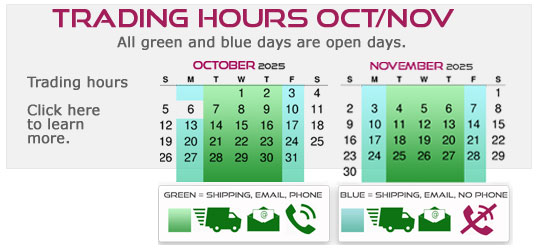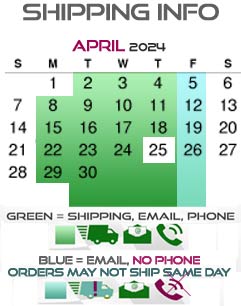Kart Set-up Explained
Kart Set-up Explained
Kart set up
The ability of a Kart to turn is significantly affected by the set-up of the front wheels. For a kart to turn, it must lift its inside rear wheel. Axle choice, tire pressure and rear wheel hub sizes play their part, but 90% of this is possible through front end setup.
Front end set up consists of adjusting the castor, camber, Ackerman, scrub radius & toe of the front wheels. The following paragraphs define these terms & relate them to the overall set up & effect on performance of the kart.
Castor
Is the angle of the stub and is one of the key ingredients for lifting the inside rear wheel; the more castor (laying the stub back), the more lift; less castor (laying the stub forward) less lift. Years of Karting experience have exposed me to many theories on castor adjustment. The following paragraph describes the solutions I have arrived at by implementing, blending & modifying these theories with some ideas of my own.
•High grip tires don’t need as much castor and low grip tires need just that little bit extra.
Grip levels at larger race meetings increase. Reducing castor will help your kart to perform longer. Do your testing on practice days, starting with maximum castor and subsequently reducing it. Determine what works best for the kart and your driving style.
•Castor also affects camber when the wheel is turned.
More positive castor will produce more negative camber on the outside tyre during cornering. Keep this in mind when adjusting camber settings. Gain grip by adding castor instead of giving the kart more negative camber.
Camber
Camber is the angle defined by the lean of the top of the wheel. Leaning in at the top (that is
towards the Kart) is negative camber. Positive camber is the reverse. The same sort of rules apply here as per the castor.
•Positive camber = more front end bite
•Negative camber = less front end bite
Factors which influence the adjustment include, but are not limited to, ambient temperature, track use on the day, track temperature & tyres used for a particular class of kart.
The result of a good camber setup is getting that inside wheel to lift. Low grip tyres (Dunlop SL1) generally need more positive camber than high grip tires (MG Red/ Yellow) which will need less to help this process.
•More is not always better – remember that too much grip can lead to oversteer. Adjust
the camber to the conditions.
Ackerman
Ackerman steering is when the inside font wheel turns more than the outside wheel. This helps with the jacking effect on the rear inside wheel. Increased Ackerman adjustment increases responsiveness & the reverse is true.
Here’s a tip: On club days, when the grip on the track is low, adjust 2mm to 4mm positive camber. At larger meetings, when grip levels are higher, adjust 0mm to 2mm positive camber.
Here’s a tip: if you are finding your kart is twitchy when turning in, reduce your Ackerman: Connect the tie rods on the outside holes on the stub.
Scrub Radius
Scrub radius is the distance from the kingpin to the inside of the wheel. Adjust the front wheels out to gain more scrub radius (& thus more jacking effect on the rear wheels) and in to reduce scrub radius (less jacking effect).
My recommendation is to adjust the scrub radius to your kart manufacturers’ recommendations & then reduce it until your kart begins to understeer. Ideal steering can then be obtained by adjusting the castor settings to the particular conditions on the day.
Toe
Toe is the amount that the wheels point in or out. The more toe out you have the more initial bite into the turn you will have but this will sacrifice straight line speed. Using toe out to gain more steer therefore would only be a last option, generally not using any more then 2mm.
Axle and Rear Track
Axle choice can sometimes mean losing seconds on the track. Finding what works best with you and your kart is a matter of adjusting & testing.
A good starting point is to use a medium axle at most tracks with a rear track at the recommended width.
The inside wheel needs to lift during cornering for a kart to turn so, if during your test sessions you find your kart is sliding in the rear, reduce the rear track width by 2.5mm each side until your kart is no longer sliding. The inside wheel should be lifting through to the apex of the corner. If you find you are not sliding, and your kart is hopping, increase track width by 2.5mm each side. You should remain within a 10-15mm variation from your kart manufactures recommendations.
Going wider on the rear track at larger race meetings where grip levels are high will have the same effect as narrowing the kart and gain more grip.
When the kart is handling poorly after trialling all possible adjustments, a change of axle types is required.
Here’s a tip: start at 0mm and go ½ mm increments on each side until best results are obtained.
Here’s a tip: If experiencing too much inside wheel lift change to a soft axle. If the inside wheel won’t lift, go to a harder axle.
Wheel Hubs
Hubs come in various sizes to help fine tune your kart, putting larger and smaller hubs can
have the same effect as narrowing and widening your chassis but without losing the balance
of your kart. General rule of thumb is if you are running soft axle slightly larger hubs can be
used, if running a medium to hard axle smaller hubs can be used do your testing with this
and see what combinations of axle and hub size help keep your kart more consistent during
the race.
Tyre pressure
Tyre pressures are another guarded secret in karting. Going up and down in pressures can have two different effects with grip and the endurance during races. Reducing tyre pressures will give the kart more grip but go too far and the kart will slide and will not handle that well and be difficult to drive.
Increasing the tyre pressure to much will make the kart to come on allot quicker but go off to quickly and will slide and be difficult to drive. When doing your test days and even at race meetings getting hot pressure readings from your tyres is very important. The testing I have done with myself and teams I have pit crewed for are as follows
Dunlop tyres (SL1A)
•Starting pressures 15-21psi
MG Red
•Starting pressures 10-12psi
MG Yellow
•Starting pressures 9-11psi
Here’s a tip: Make changes to tyre pressures ½ PSI increments. When you have good tyre pressures, tyres should only raise about 2 PSI
Here’s a tip: Larger wheel hubs will gain grip. Smaller wheel hubs will lose grip

















